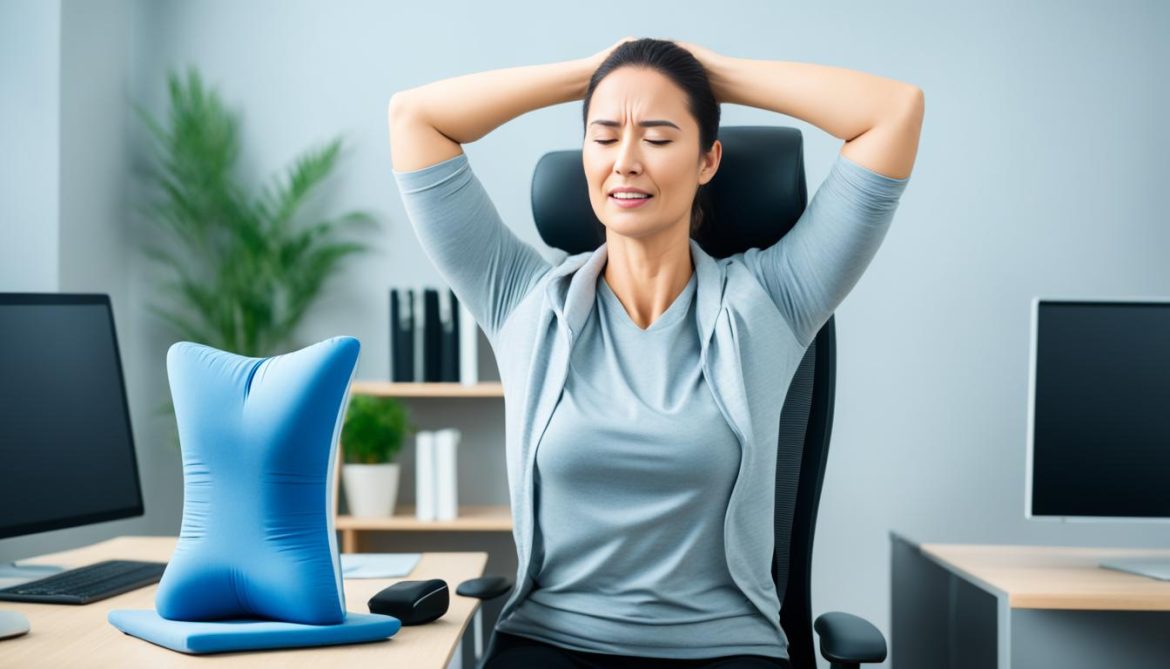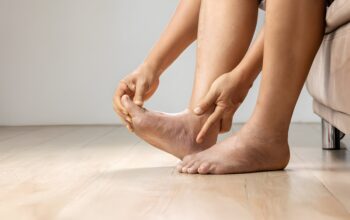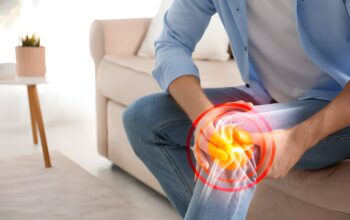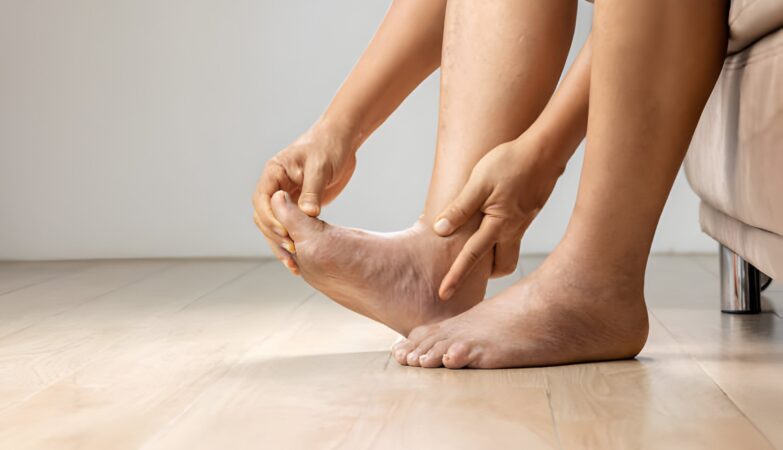Do you experience discomfort or pain in your buttocks when you sit for extended periods of time? You’re not alone. Many people face this issue, and there can be several reasons behind it. Understanding the causes and exploring tips for relief can help you alleviate buttock pain when sitting.
Buttock pain when sitting can result from minor injuries, bruises, or more severe conditions like sciatica and damaged disks. The symptoms may include bruising, numbness, tingling, swelling, and difficulty transitioning from sitting to standing. Conditions such as sciatica, piriformis syndrome, coccydynia, and bruising can all contribute to this type of pain. It is important to seek proper diagnosis and medical attention to determine the underlying cause and ensure appropriate treatment.
Fortunately, there are steps you can take at home to relieve buttock pain when sitting. Simple strategies like avoiding prolonged sitting, regular movement and stretching, using cushions or hot and cold packs, and taking over-the-counter pain relief options can make a significant difference. In some cases, medical interventions such as exercises, physical therapy, or even surgery may be necessary for long-term relief.
Your comfort is essential, and prioritizing your well-being while sitting can prevent or alleviate buttock pain. By understanding the causes, seeking medical attention when needed, and implementing practical remedies, you can improve your sitting experience and reduce discomfort in your buttocks.
Key Takeaways:
- Prolonged sitting can cause buttock pain, which can be a result of minor injuries, sciatica, piriformis syndrome, coccydynia, or bruising.
- Proper diagnosis and medical attention are crucial to determine the underlying cause and treatment approach for buttock pain when sitting.
- Home remedies such as avoiding prolonged sitting, movement and stretching, cushions, and hot and cold packs can provide relief.
- In some cases, medical interventions like exercises, physical therapy, or surgery may be necessary for long-term relief.
- Prioritizing your comfort and well-being while sitting can help prevent or alleviate buttock pain.
Note: The image above is used for illustrative purposes only and does not imply any endorsement or specific advice related to the content of this article.
Conditions that Cause Buttock Pain When Sitting
Buttock pain when sitting can be caused by several conditions. Sciatica is a condition where the sciatic nerves, which run from the lower spine through the buttocks to the knees, are compressed or obstructed. This can result in shooting pain, tingling, or numbness in the buttocks or legs.
Piriformis syndrome occurs when the piriformis muscle irritates or compresses the sciatic nerve, causing pain in the buttocks, leg, or thigh.
Coccydynia is the medical term for tailbone pain, which can be caused by injuries, strain, poor posture, or being overweight.
Bruises on the buttocks can also cause pain and discomfort. It is important to identify the specific condition causing the buttock pain in order to determine the appropriate treatment approach.
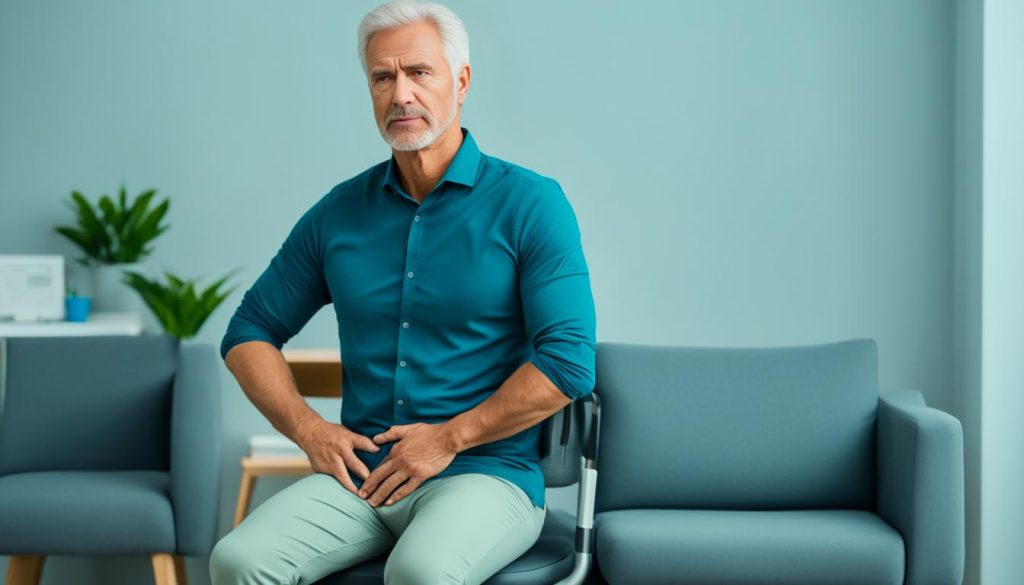
Note: The image is relevant to the topic of buttock pain when sitting.
Diagnosis and Medical Attention for Buttock Pain While Sitting
To diagnose the cause of buttock pain when sitting, seek medical attention from a doctor. The doctor will conduct a thorough physical examination and may recommend additional tests to determine the underlying cause. These tests may include X-rays, MRI scans, or CT scans, which can provide detailed images of the affected area. In some cases, the doctor may also refer you to a specialist for further evaluation and treatment.
If your buttock pain persists for more than a few weeks or if simple home treatments do not provide relief, it is important to seek medical attention. Similarly, if the pain is severe or is accompanied by other symptoms such as bleeding, high temperature, pain in other areas, numbness or weakness in the legs, or difficulty controlling the bowels or bladder, immediate medical attention should be sought.
Remember, early diagnosis and intervention are crucial for effective treatment and pain management. Do not ignore persistent or severe buttock pain, as it may indicate an underlying condition that requires medical attention.
Take care of your health and prioritize seeking appropriate medical attention to address the root cause of your buttock pain when sitting.
Tips for Relieving Butt Pain While Sitting
If you experience discomfort in your buttocks when sitting, there are several strategies you can try at home to alleviate the pain and improve your sitting comfort. By following these tips, you can manage and prevent sitting-induced buttock pain:
- Avoid prolonged sitting: Sitting for extended periods can put excessive pressure on your buttocks and exacerbate pain. Take regular breaks to stand up, stretch, and move around.
- Regularly move around and stretch: Engage in gentle exercises and stretches to relieve tension in your buttocks and promote blood circulation. Simple activities like walking or performing seated leg stretches can make a significant difference.
- Use a doughnut cushion: A doughnut cushion can help relieve pressure on your buttocks and distribute your weight evenly while sitting. This type of cushion features a hole in the center, reducing direct pressure on sensitive areas.
- Apply hot or cold packs: Alternating between hot and cold packs can provide temporary pain relief and reduce inflammation in the buttock area. Apply a hot pack for 20 minutes, followed by a cold pack for another 20 minutes.
- Opt for loose-fitting clothing: Wearing loose-fitting clothing can minimize friction and pressure on the buttocks, promoting greater comfort while seated. Avoid tight clothing that may restrict blood flow and exacerbate pain.
- Consider over-the-counter pain relief: Nonsteroidal anti-inflammatory drugs (NSAIDs) like ibuprofen or acetaminophen can help reduce pain and inflammation. Before taking any medication, consult with your healthcare provider to ensure it’s safe for you.
- Engage in exercises and stretches: Certain exercises and stretches can specifically target the buttock muscles, providing relief from pain. Yoga, Pilates, and mobility exercises are excellent options to strengthen and stretch the muscles in your buttocks.
Remember, everyone’s body is unique, so it’s essential to listen to your body and find what works best for you. If your buttock pain persists or worsens, make sure to consult with a healthcare professional for a proper diagnosis and tailored treatment plan.
By following these tips, you can take control of your sitting discomfort and enjoy a pain-free sitting experience.
| Tips for Relieving Butt Pain While Sitting |
|---|
| Avoid prolonged sitting |
| Regularly move around and stretch |
| Use a doughnut cushion |
| Apply hot or cold packs |
| Opt for loose-fitting clothing |
| Consider over-the-counter pain relief |
| Engage in exercises and stretches |
Conclusion
Buttock pain when sitting can be a debilitating issue that affects many individuals. It can have various causes, ranging from minor injuries and bruises to more serious conditions like sciatica or piriformis syndrome. It is crucial to identify the underlying cause of the pain to determine the appropriate treatment approach.
If you experience persistent or worsening buttock pain, it is recommended to seek medical attention. A healthcare professional can conduct a thorough examination and may recommend further tests to diagnose the exact cause of the pain. Remember that early intervention is key to preventing complications and ensuring proper management of your condition.
In addition to medical options, there are also various home remedies and lifestyle changes that can help alleviate buttock pain and improve sitting comfort. Taking breaks, avoiding prolonged sitting, and incorporating regular movement and stretching into your routine are simple yet effective strategies. Additionally, using cushions or hot and cold packs, as well as practicing exercises and stretches, can provide relief.
Remember, your comfort and well-being matter. Take care of your body and prioritize your comfort when sitting to prevent or manage buttock pain. With the right approach and proper self-care, you can find relief and improve your quality of life.
FAQ
Why does my butt hurt when I sit?
Butt pain when sitting can be caused by various factors, including minor injuries, bruises, or more severe conditions like sciatica and damaged disks. It is important to identify the underlying cause to determine the appropriate treatment approach.
What are the conditions that cause buttock pain when sitting?
Some common conditions that can cause buttock pain when sitting include sciatica, piriformis syndrome, coccydynia, and bruising. Identifying the specific condition is important for determining the right treatment.
How is buttock pain diagnosed and when should I seek medical attention?
Diagnosis of buttock pain can be done through a physical examination. However, further tests like X-rays, MRI scans, or CT scans may be recommended to determine the exact cause. It is advisable to seek medical attention if the pain persists, worsens, or is accompanied by other concerning symptoms.
What are some tips for relieving butt pain while sitting?
To alleviate buttock pain when sitting, you can try avoiding prolonged sitting, regularly moving around and stretching, using cushions or hot and cold packs, wearing loose-fitting clothing, and taking over-the-counter pain relief medications. Additionally, exercises, stretches, and practices like yoga can also help relieve buttock pain.
What are some ways to prevent butt pain when seated?
To prevent buttock pain when seated, it is important to practice good posture, take breaks from sitting, use ergonomic chairs or cushions, and engage in regular exercise and stretching to keep the muscles in the buttock region strong and flexible.

